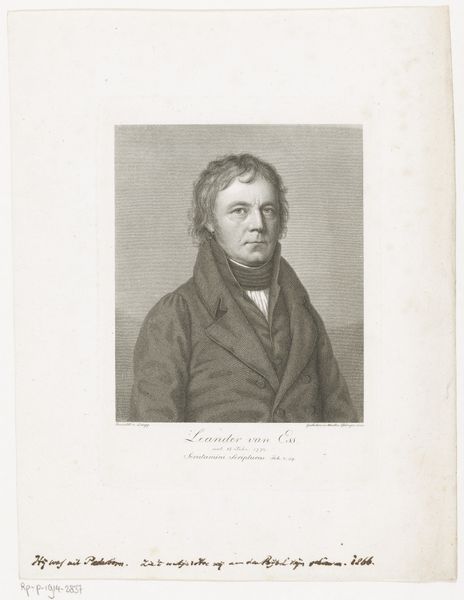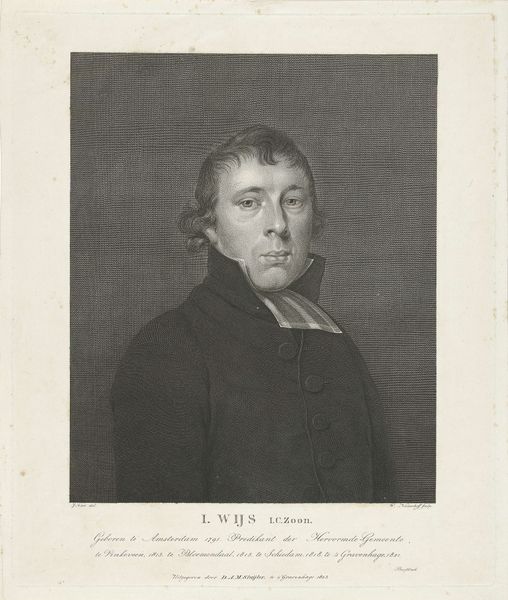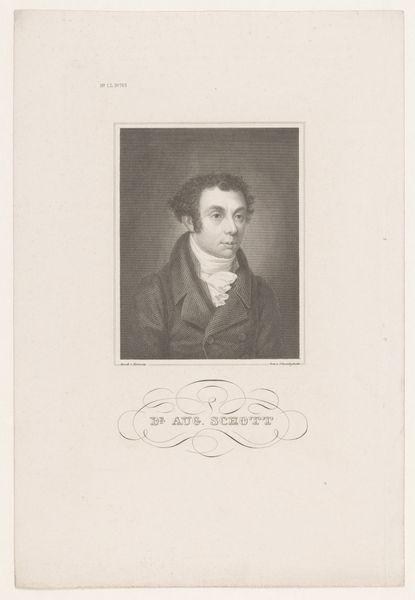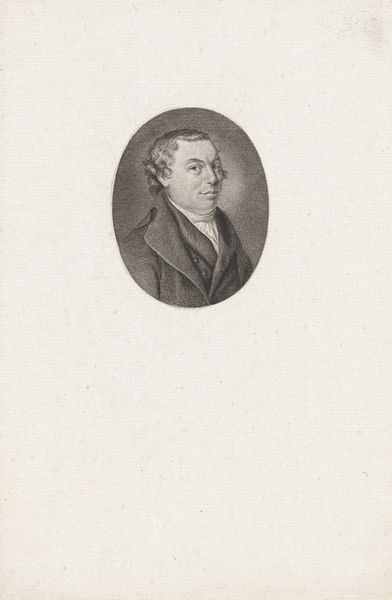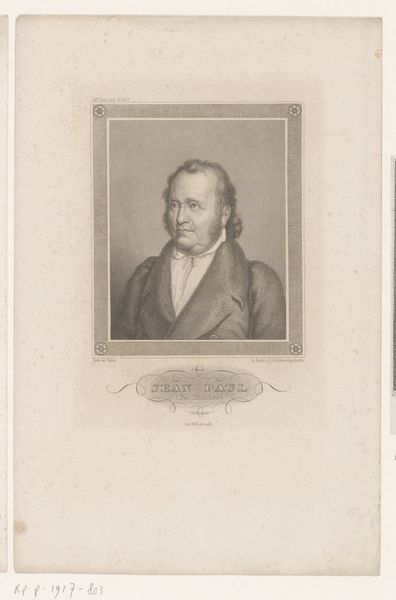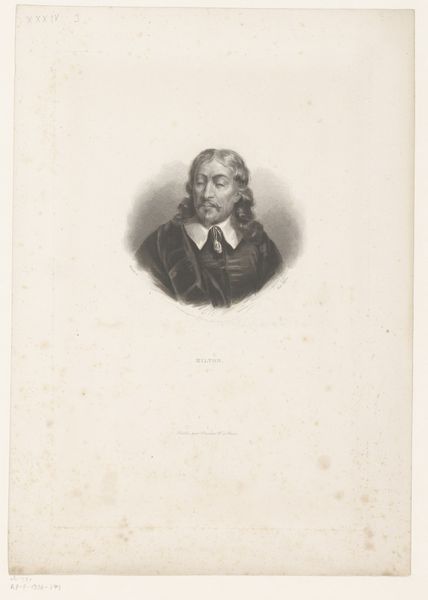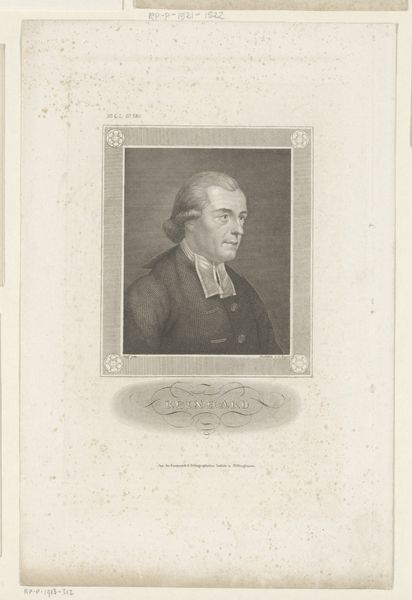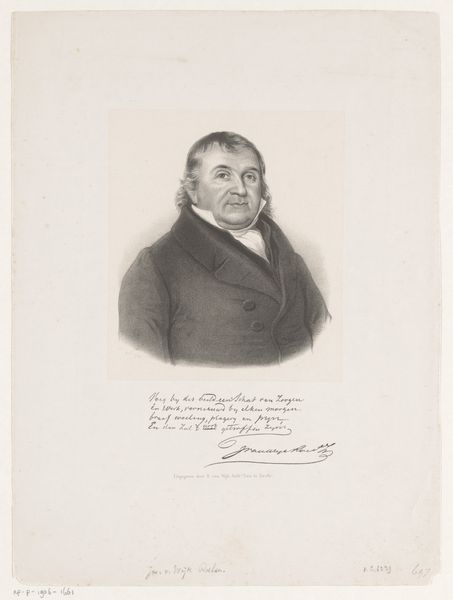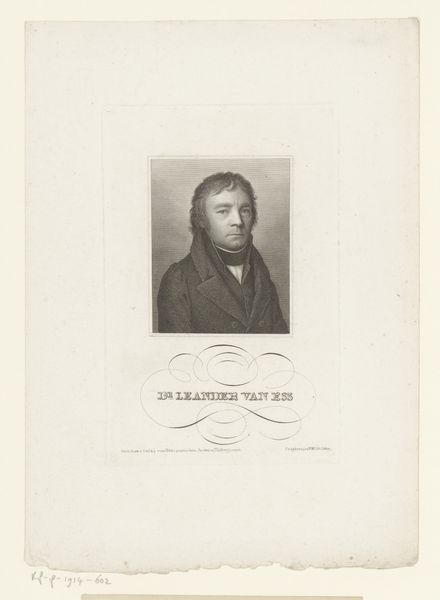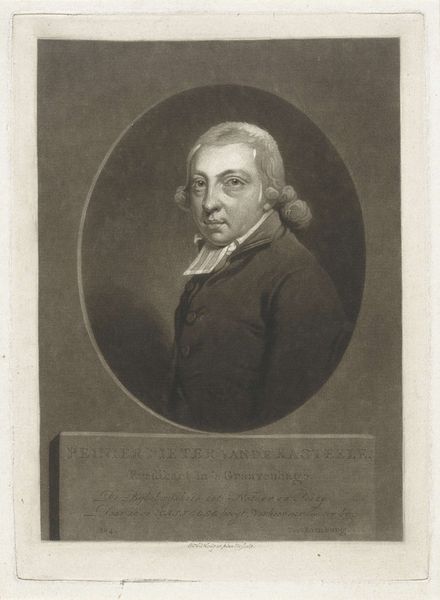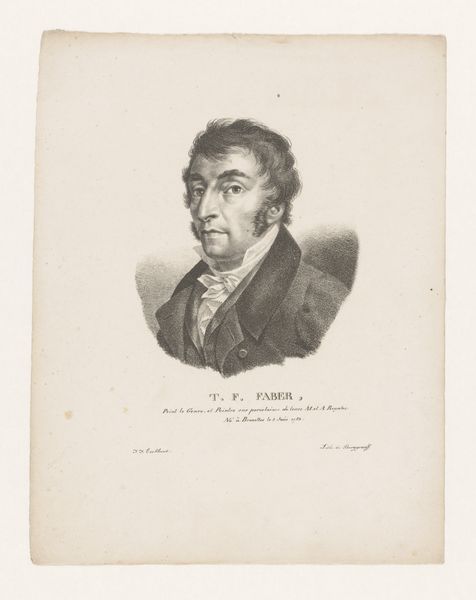
drawing, graphic-art, print, paper, engraving
#
portrait
#
pencil drawn
#
drawing
#
graphic-art
#
toned paper
#
16_19th-century
# print
#
paper
#
pencil drawing
#
engraving
#
realism
Dimensions: height 240 mm, width 165 mm
Copyright: Rijks Museum: Open Domain
Curator: Here we have "Portret van Leander van Ess," a work made sometime between 1840 and 1855, courtesy of Johann Georg Nordheim. It's an engraving, seemingly based on a pencil drawing, printed on paper. Editor: My initial thought is one of understated dignity. There's a formality, of course, but it’s softened by the somewhat disheveled hair and direct gaze of the subject. He appears…earnest, shall we say? Curator: The printing process itself lends to that feel. Look at the even, controlled lines of the engraving. It mimics the precision of the original pencil drawing. Think of the labor involved—the transfer of the image, the careful etching into the plate. These prints allowed for wider distribution and served a purpose within the market for images at the time. Editor: Precisely! And consider van Ess himself – the stern expression suggests a deep purpose. The way the artist captured the lines around his eyes – he carries a certain weight. Do we know anything about van Ess that these visual cues might illuminate? Curator: Historical records show Leander van Ess was a noted German Catholic theologian and Bible scholar of his day, very active in promoting interfaith relations and affordable Bible translations. The portrait could reflect an effort to legitimize and propagate such views, in defiance of competing, orthodox interpretations and competing interests tied to bible printing and publication at the time. Editor: The intensity of his gaze suddenly makes sense. The somber colors, almost a monochrome, give it a timeless quality. The composition itself focuses entirely on the face and upper torso. Is this a symbol of directness, a sort of ‘no frills’ dedication to the mission you describe? The symmetry in the framed portrait, even down to the clasps of his jacket, projects resolution and controlled determination. Curator: It certainly could be read that way. And knowing more of the production realities further informs our appreciation of his efforts, doesn't it? By disseminating his image widely, advocates may have been trying to turn a scholarly vocation into a populist appeal, using reproductive prints as an accessible medium. Editor: Exactly! A powerful synergy between the man, the symbolism, and the medium used to convey it. Thank you! Curator: Agreed, a very astute assessment. Understanding its construction highlights just how carefully conceived the message really was.
Comments
No comments
Be the first to comment and join the conversation on the ultimate creative platform.
